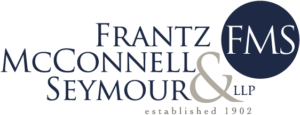Most employers and their legal counsel pay little attention to the actions of the National Labor Relation Board (NLRB). They assume that the NLRB only concerns itself with employers whose employees are members of a union. In many instances that is correct but in fact, the NLRB has jurisdiction over all private sector employers without regard to whether their workforce is unionized. From time to time, the NLRB steps away from resolving union election disputes and renders decisions that have very significant implications for all employers. That has been taking place for the past year regarding employer workplace rules and in particular, rules that seek to limit employee communications on social media.
The NLRB interprets and enforces the requirements of the National Labor Relations Act (NLRA). The NLRA prohibits employers from interfering with employees’ right to self-organization, including the right “to engage in concerted activities for the purpose of collective bargaining or other mutual aid or protection.” Over the past 2 years, the NLRB has applied this prohibition to a number of fairly common workplace rules and employee handbook provisions and found many of them to be in violation of the NLRA. Recently, the NLRB’s General Counsel authored a report “to offer guidance on my views of this evolving area of labor law, with the hope that it will help employers to review their handbooks and other rules, and conform them, if necessary, to ensure that they are lawful.”
The examples of rules the General Counsel lists as being in violation of the NLRA would surprise many employers and their employees. The following is just a sampling of such common workplace rules:
- Prohibitions on sharing employee information outside work, including phone numbers and addresses
- Prohibitions on discussing “work related matters” outside the workplace
- Requirements that employees “be respectful of the Company and its employees”
- Rules that require employees to refrain from conduct that may cause damage to the Company’s business or reputation
- Rules against sending “unwanted, offensive or inappropriate” emails
- Rules prohibiting employees from “discussing Company matters” with representatives of the media
- Rules prohibiting use of Company logos in social media
- Rules prohibiting employees from identifying the Company in personal social media postings
- Rules prohibiting discussion or disclosure of an employee’s wages or benefits
My guess is that most employers have one or more of these rules in place, either in a handbook or in stand-alone policies. These types of rules have been regularly promulgated for the entirety of my 28 years of law practice and until now, never questioned.
If an employer takes any form of disciplinary action based on a rule such as these which the NLRB finds to have a chilling effect on employees’ rights to concerted activity, affected employees may be entitled to reinstatement, back pay and attorney fees. In addition, the NLRB General Counsel can seek review of an employer’s workplace rules even if they have not been enforced on the premise they may be causing an unlawful chilling effect.
If your business is like most, it prepared an employee handbook or set of workplace rules 10 – 15 years ago and there has been very little thought put into it since. Now is probably a good time to pull it out of the drawer and have it reviewed for NLRA compliance.
RELATED POSTS:

John M. Lawhorn of Frantz, McConnell & Seymour, LLP practices extensively in the field of Labor and Employment law and regularly advises clients concerning federal and state laws pertaining to employment discrimination, retaliation and harassment, workplace policies, OSHA/TOSHA compliance, wage and hour compliance, labor/management relations, employment contracts and in many other aspects of the employment field. He regularly represents employer and employee interests in Tennessee State and federal courts on a wide variety of employment related matters.




